How to overseed an existing lawn
Throughout the seasons, most lawns will suffer from patchiness, wear and tear, a build-up of weeds, and possibly some moss and dead grass. Overseeding is a great way to help resolve these issues and get your lawn back to looking its very best.
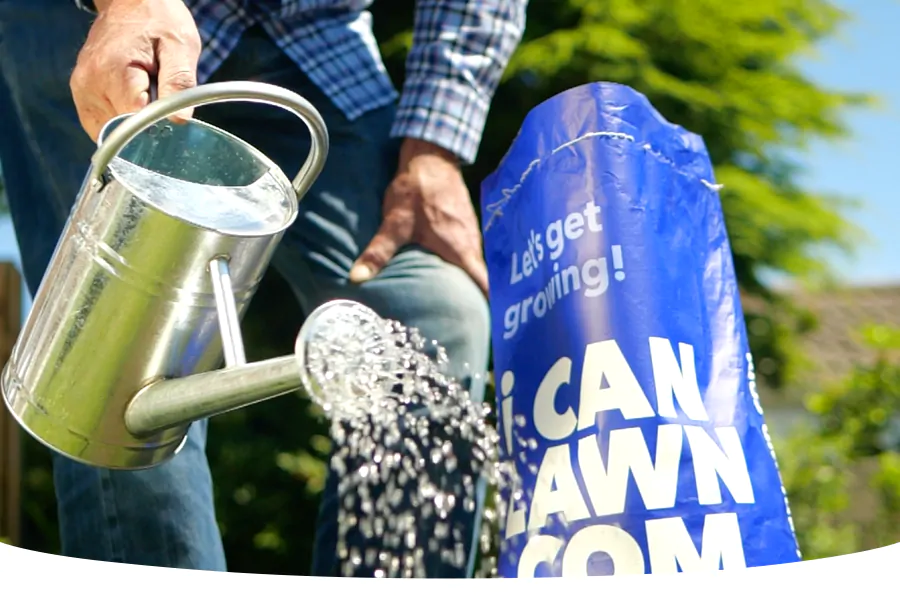

Once you’ve picked the best grass seed to overseed your lawn with, it’s time to think of your next best steps. Before sowing, have a look at the weather forecast for your area. Temperatures need to be 10 degrees and above consistently for at least two weeks for your grass seed to grow.’
With the weather perfect for overseeding, it’s now time to prepare your seedbed.

Here’s everything you’ll need:
• A garden trowel or weedkiller
• A pre-seed lawn feed
• A garden fork
• A rake
• Bamboo canes or string
• A cup
• A watering can, hose or sprinkler
• Net covering or old CDs
• A lawn mower
With your equipment at the ready, you first need to remove any weeds or moss.
Step One: Remove weeds and moss before you overseed
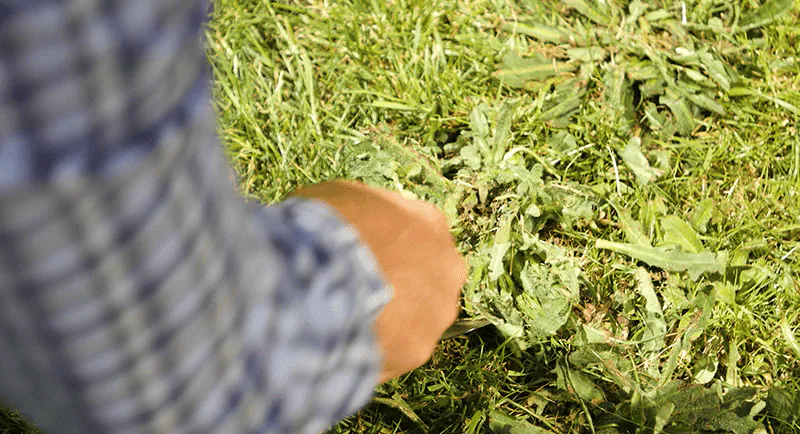
If you have only a few weeds in your lawn, you can remove these by hand with a trowel. Make sure to remove all the roots.
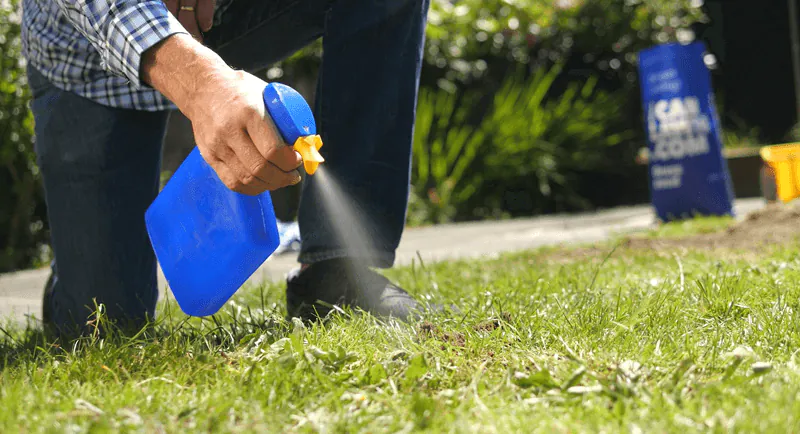
Alternatively, you can target individual weeds by using a selective weedkiller.
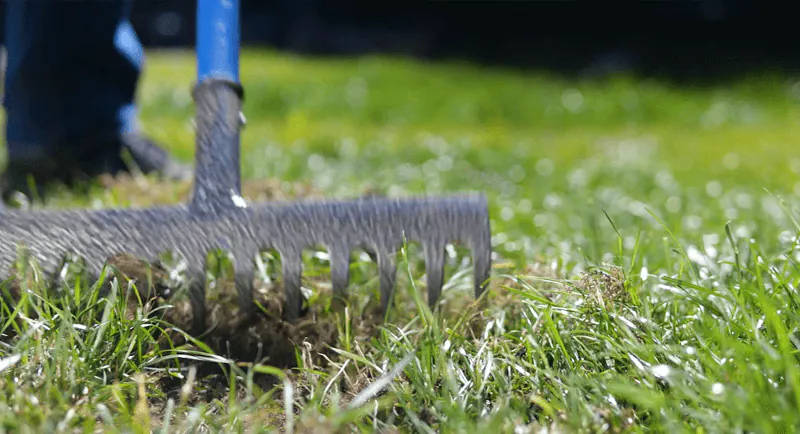
Moss can be removed by raking it out, but for this to be effective in the long run, you will need to do this regularly.
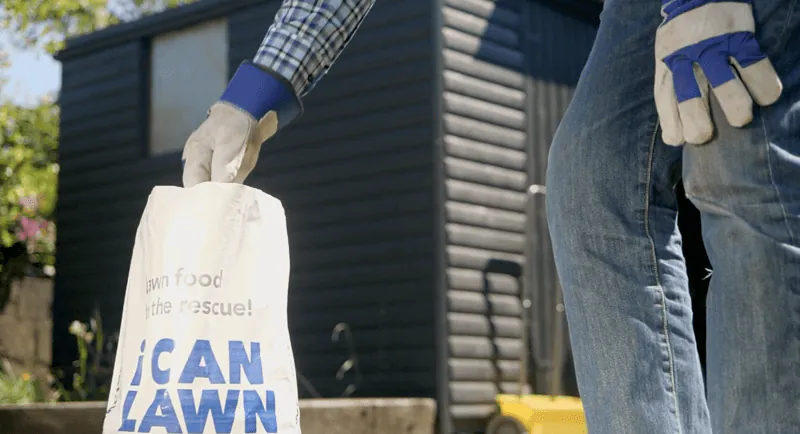
If you have lots of weeds and moss in your lawn, a Feed, Weed and Moss Killer product such as our 3 IN 1 Lawn Rescue will remove them in one application whilst also feeding your lawn in preparation for overseeding.
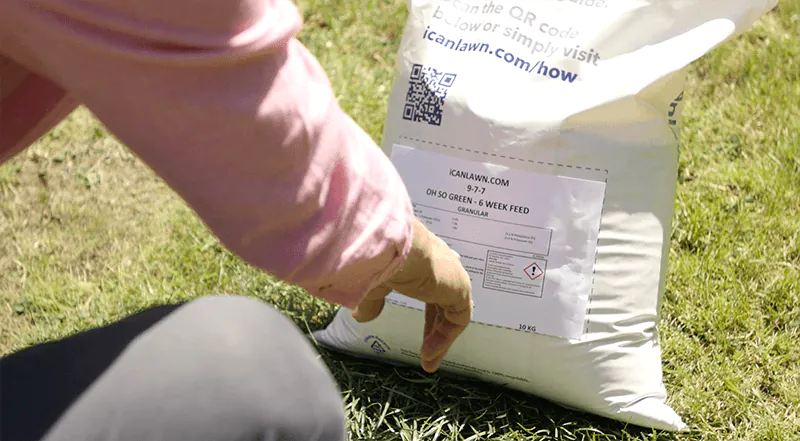
If you have no weeds or moss, you should still apply a pre-seed lawn food, such as our Pre-Seed First Feed, that will give your soil the nutrients it needs to speed up the growth of your grass. Whatever product you choose, always read the instructions, and wait the recommended time before seeding.
Now that all weeds and moss are removed, you can move onto mowing and scarifying your lawn.
Step Two: Mow and scarify

Before scarifying, you should mow your lawn as you won’t be able to while your new grass is growing.
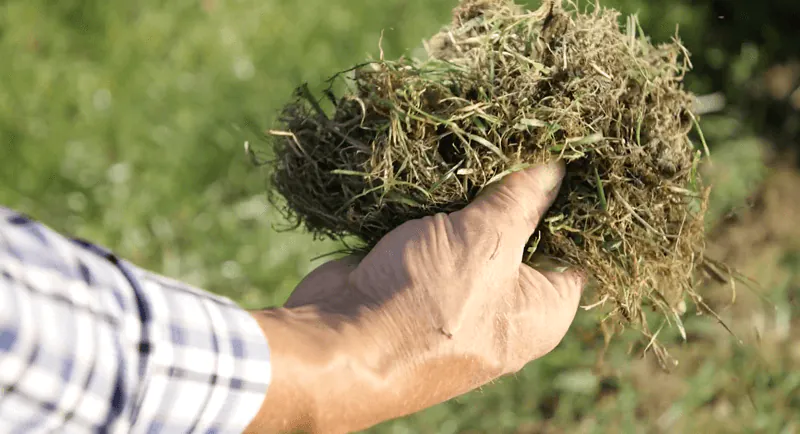
Scarifying is a fancy word for raking out all the bad stuff that has been building up on the surface of your lawn – such as dead grass which is called thatch.
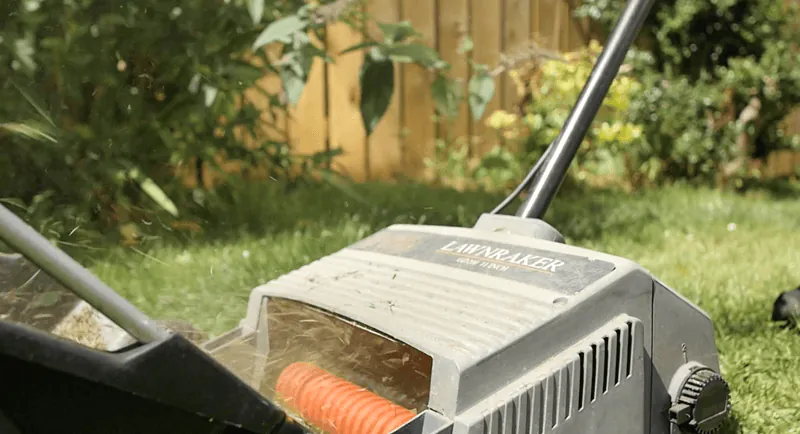
You can scarify your lawn using a rake, or by using an electric scarifier for a larger area. Don't be alarmed - your lawn will look a lot worse after scarifying, but as they say - it gets worse before it gets better! By scarifying your lawn, you will also loosen and roughen up the top layer of your soil, and this will help your seed to embed and grow.

If you notice you have a lot of dips in your lawn, you can use topsoil to level these areas out.
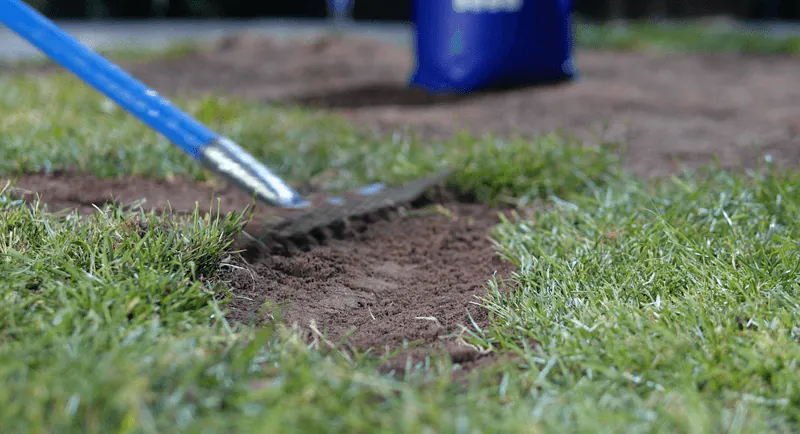
Likewise, if you believe the soil in your lawn to be of poor quality – you can also add topsoil to improve this.
Your lawn should now be weed free, moss free and thatch free, so you can begin to sow your seed!
Step 3: Sow the seed

To overseed an existing lawn, you should sow at a rate of 35g per m2. You can do this easily by hand, or you can use a seed spreader.

When sowing by hand measure out a m2 using bamboo canes or string.
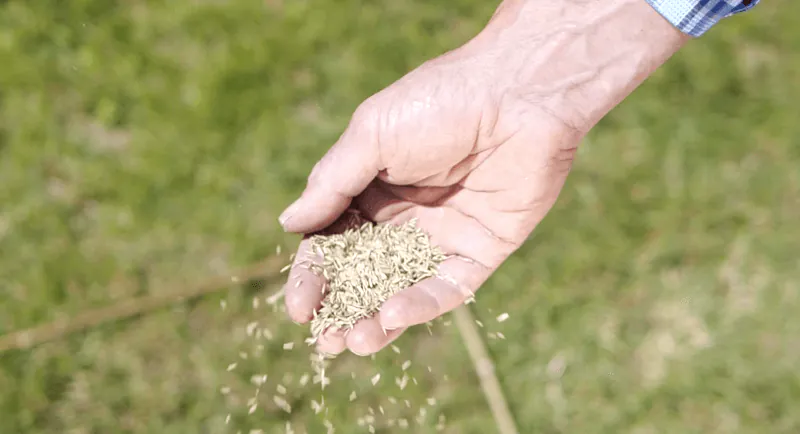
Measure out 35g of seed at a time in a cup, and go back for more seed when you need it.
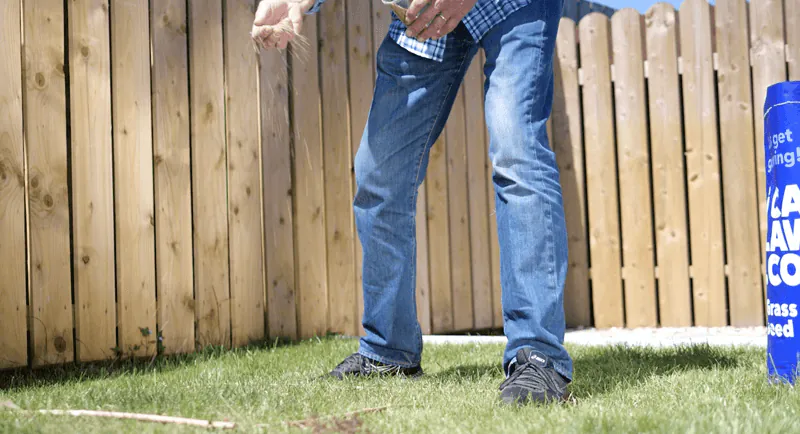
Scatter the seed from side-to-side widthways and lengthways to get good coverage.

Your seed needs space to grow and shouldn’t be in a heaped pile.
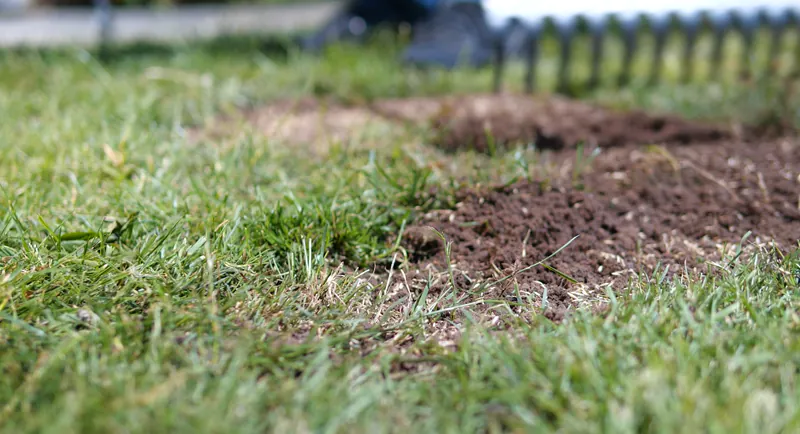
Using your rake again, rake the seed in so that it is in amongst the soil.
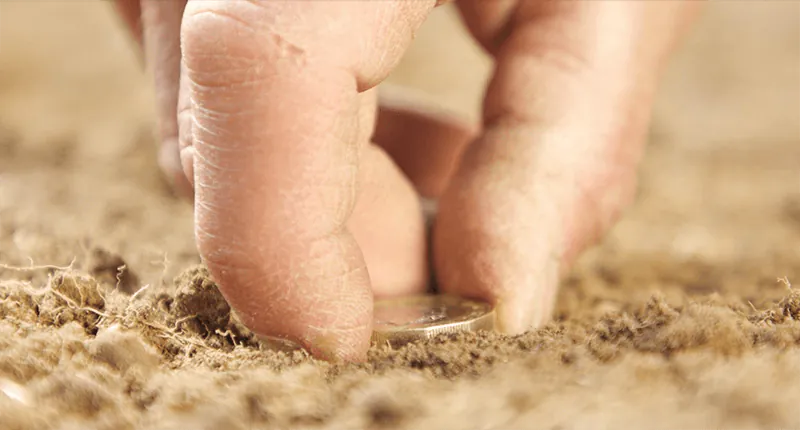
About three-pound coins stacked is both deep enough and shallow enough to allow the seed access to the water, heat and sunlight it needs to grow.
After scattering your seeds, it's time to make sure they grow!
Step 4: Firm in and water
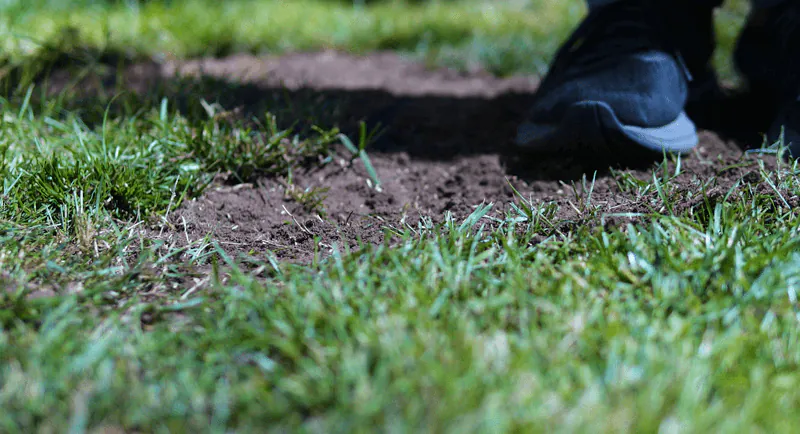
To ensure that the seed is nicely embedded into the soil, walk across the seedbed with your feet, firming it in.

At icanlawn.com, we call this the penguin shuffle.

You should water your growing seedlings once a day, every day for the first 6 weeks after sowing – this is how long it will take for your lawn to be fully grown and be ready for its first mow. On days when it rains during the six weeks, you can skip watering. Try to keep traffic off your lawn while it grows.
To keep your seeds safe from hungry birds, we have a few tips to help!
Step 5: Keeps birds at bay

Cover your seed with a tarpaulin or net covering in the first few days after sowing to keep birds at bay.
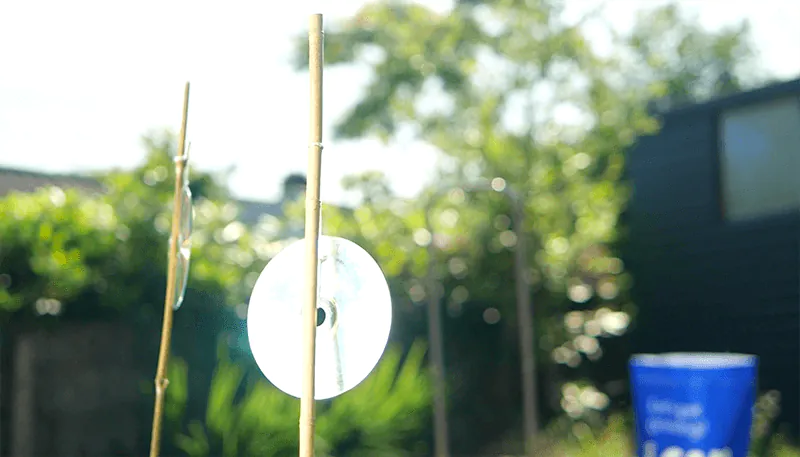
You can also use reflective items that will deter birds from eating your grass seed – such as CDs.
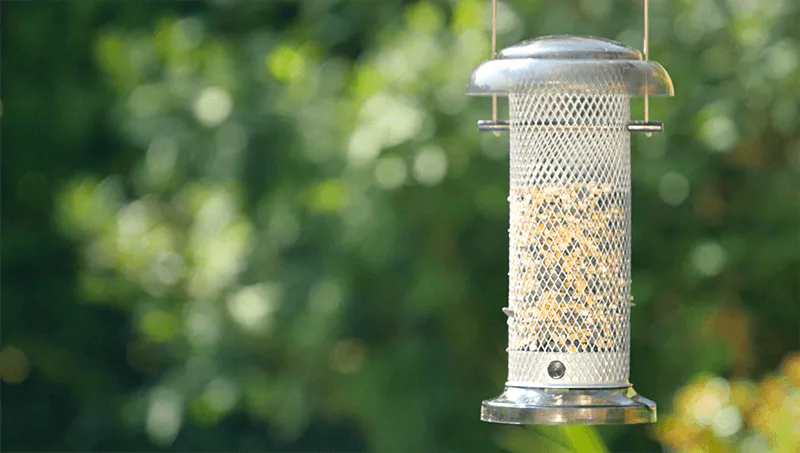
Alternatively, you can provide them with another food source that keeps them away from your lawn and everyone happy!
With your new lawn fully grown and now very long, it’s time to give it its first mow!
Step 6: First mow
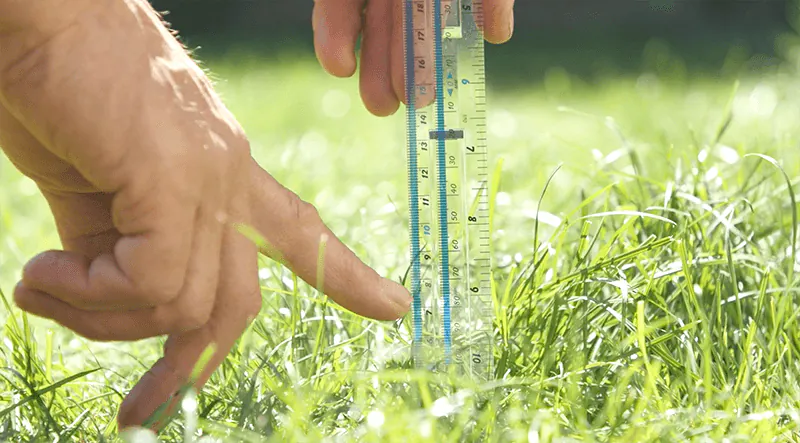
You can mow your lawn around the 6 – 8 week mark when the grass blades have hit 5-7cm.
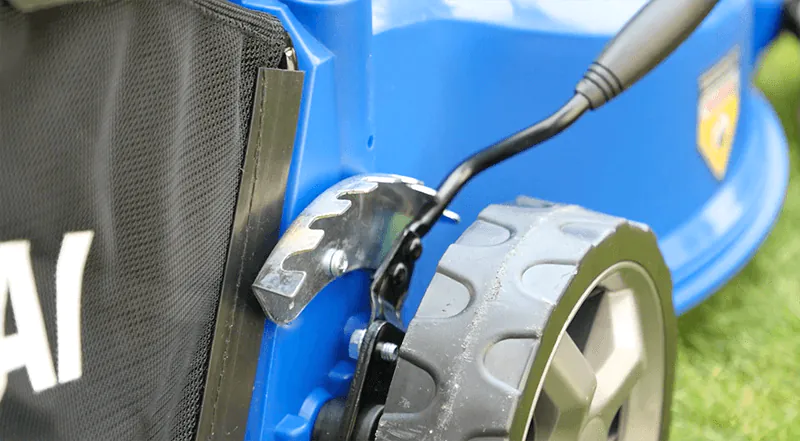
For your lawn’s first mow, make sure to cut it on the highest setting on your lawn mower.
Now you've finished overseeding, and your new grass is fully grown, beautifully green and healthy, keep it this way by regularly and seasonally feeding it. Remember also to remove any weeds or moss as they appear.



